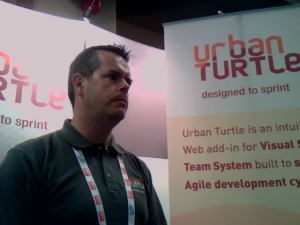After spending 4 days helping out manning our booth at the Agile2009 conference in Chicago, I came to the conclusion that there are 6 types of visitors to the exhibition hall where various companies have a booth showcasing their products and services. Below is my summary of the various types. It is obvioulsy impossible to tell in which category an individual falls in unless you spend time talking them. The list below should help you qualify your potential leads.
- The Genuinly Interested: Having a booth at such events represents an important expense for many organizations and most people expect (at least hope) to cover their expenses by getting people to purchase their products or services. The Genuinly Interested attendee is exactly the type of individual companies target when they choose to rent a booth. The Genuinely Interested attendee demonstrates a positive reaction to your presentation, typically followed by one or more questions about the product. If an individual spends more than 10 minutes in your booth talking to you about your product, then requests further information and even offers to give you their business card – see our thoughts in opt-in marketing – you have a good potential. Needless to say, although this never guarantees a quick or even a direct sale, it is a great opportunity to educate your visitors who may potentially become a spokesperson for your product which would eventually lead to sales generation.
- The Skeptical: The initial behavior of the Skeptical is similar to that of the Genuinly Interested individual with the exception that the Skeptical is a little more difficult to handle as he seems more interested in pointing out the weaknesses of your product than he is in purchasing it. Although you may not enjoy the experience and you may wish the Skeptical to go away, that would be a mistake as the Skeptical is actually providing you useful market information. Let’s face it, people don’t have time to waste so when someone stops by your booth and actually spends time prodiving feedback, you should take advantage. As with the Genuinly Interested who may not purchase right there, the Skeptical will most probably talk about your product and the way you handle his feedback will likely have an impact down the line on your sales.
- The Toy Collector: These individual come in various shapes and forms. The more benign Toy Collectors simply walk to your booth and ask an attendee for the goodies – “I would like a t-shirt please”, “Can I take a mug?” – and then walk directly to the next booth with the same request. The trickier ones are those who stay to listen to your elevator pitch, node, might ask a question or two and then wait for or simply ask for the goods. It is only at the last minute you realize your visitor was simply interested in getting promotional toys. Once again, this behavior might be disappointing but you are also missing an important opportunity here. The main purpose for promotional items is to give visibility to you product or service and anyone who walks aways with an item that displays your company name, your company logo, and your web site should be welcomed at your booth.
- The Pesty Competitor: After you have been in your booth for a while, you start to see competitors come by and ask questions about your product or service and although you may wish to keep your competitive advantage hidden from your competitors, information exchange is a normal part of doing business – shame on you if you aren’t doing it. The Pesty Competitor is someone who takes so much of your time and attention that you are no longer able to talk to Genuinly Interested attendees. You could think, once again that this is a bad thing. Quite the contrary. You certainly don’t want competitors to take all of your time, but otherwise this is an amazing opportunities to discuss cooperation and potential partnership – assuming you are not competing for the exact same market segment.
- The Friend Seeker: This individual comes to your booth with no interest in your product. The Friend Seeker starts with simple questions and then moves on to more personal questions – “Where do you live?”, “Do you have any kids?”, “What are you doing after duty?”. Based on my experience, these individuals are rare and explaining to them you need to be working typically takes care of the visitor without any negative consequence unless, of course, you are also looking for friends to share dinner with.
- The Zombies: Finally, the Zombies are individuals who may walk through the exhibit hall at a fast pace while avoiding eye contact or simply do not even come near the exhibit hall. Needless to say, unless they already own your product, they are unlikely to become customers in the short term.
Meeting so many people is always interesting and pleasant and making sure we deliver the most compelling messages to capture our visitors’ interest while remaining transparent is critical to stay true to our values and commitment toward the customer experience.
As a final note, exchanging stories and experience with so many people during the conference has proven to be interesting, informative, and thought-provoking. Once in a while, we need to remind ourselves that such events are great opportunities to bring back great ideas then it’s up to our organization to decide how we will deal with these ideas.





Recent Comments